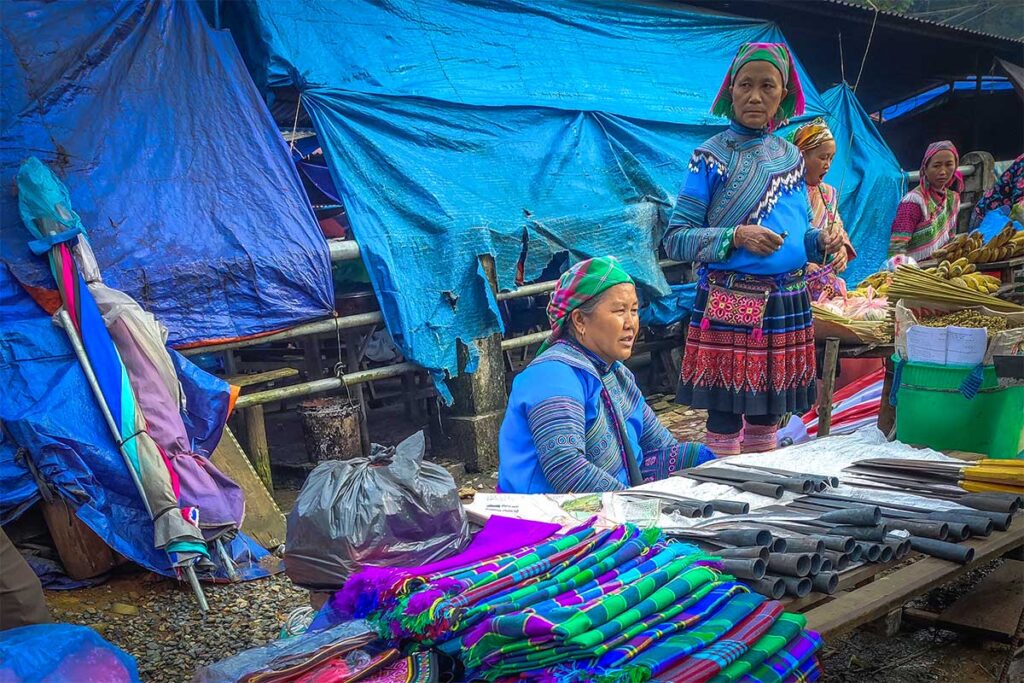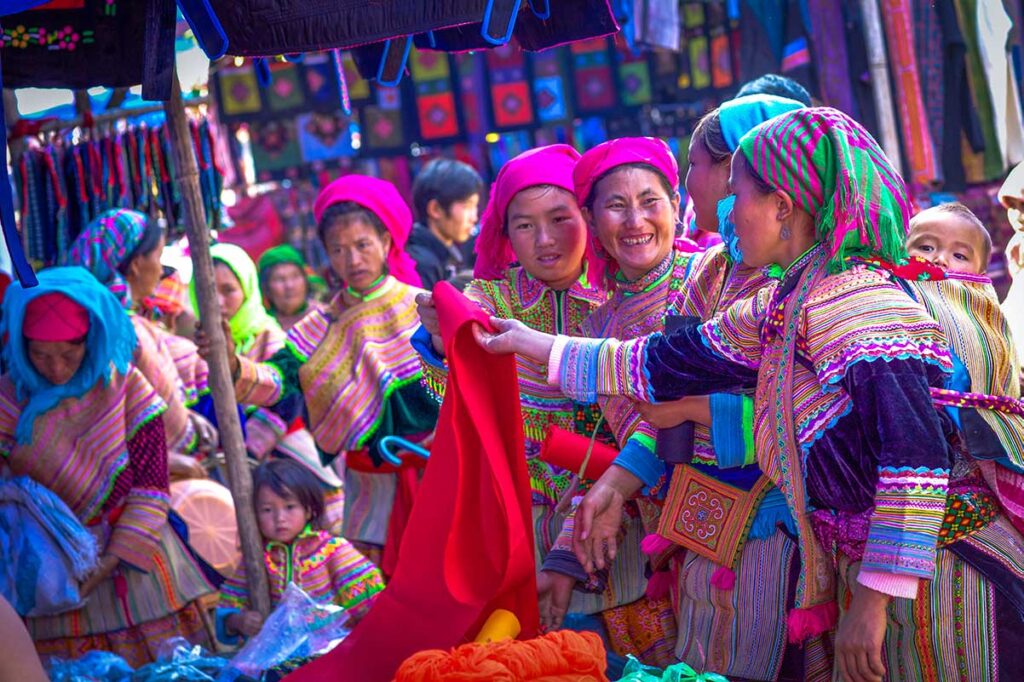What is Lung Phin Market like?
Lung Phin Market is set in a quiet valley in Bac Ha District, Lao Cai Province — the same province where you’ll find Sapa. Surrounded by ethnic villages, it serves as a trading and meeting point for groups like the Hmong, Tay, Giay, and Phu La. Unlike the more famous Bac Ha Market, this one remains almost untouched by tourism.
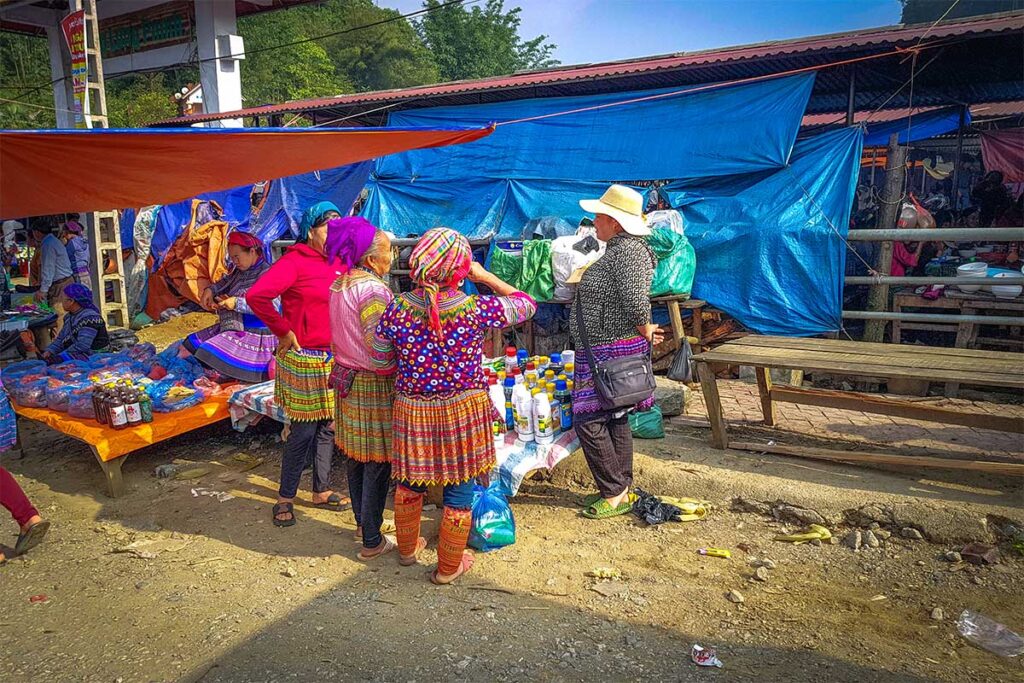
Locals gather here to sell livestock, traditional textiles, handmade tools, and homegrown produce. It’s also a social event, where people chat, drink corn wine, and sometimes play traditional instruments late into the night. The atmosphere is lively but raw — it’s not a tourist show, and that’s exactly what makes it worth the journey.
When is the Lung Phin Market?
Lung Phin Market takes place once every six days, following the Vietnamese lunar animal calendar — specifically on days of the Tiger and the Monkey. Because of this rotating schedule, it doesn’t fall on a fixed weekday like many other markets, so you’ll need to check a local calendar or ask your guide to confirm the date.
For example, if the market is held on a Wednesday this week, it will take place again the following Tuesday. The market starts early in the morning, often before 7:00 AM, and winds down by late morning. Many people arrive the night before to catch up with friends and prepare their goods, turning the area into a lively gathering spot even before sunrise.
How to get to Lung Phin Market
Lung Phin Market is quite off the beaten track — the least known of the main markets in Bac Ha District. While Bac Ha Market draws large weekend crowds and Coc Ly Market gets some tour traffic, Lung Phin remains a quiet, very local event. There are no public tours going here, so you’ll need to arrange private transport. Because the market starts early in the morning, it’s best to stay nearby the night before. The closest base is Bac Ha town, but it’s also possible to come from Sapa with an early enough start.
From Bac Ha Town
Lung Phin is just 10–12 km from Bac Ha town, about a 30–40 minute drive. This is by far the easiest option — just stay overnight in Bac Ha and head out early.
From Sapa
The route from Sapa is just over 100 km, but the winding mountain roads make the journey about 3 hours by car — even longer by motorbike.
It’s a scenic ride, but not ideal to do as a same-day trip. If you’re coming from Sapa, it’s much more comfortable to travel the day before and sleep in Bac Ha.
Arranging private transportation
Unlike Bac Ha Market, there are no public or group tours to Lung Phin. You’ll need to hire a private car with driver or ride your own motorbike. Either way, plan ahead — there’s no signage and no English once you arrive.
Want to rent a car with driver from Sapa?
If you’re planning to visit Lung Phin Market on your own schedule, renting a private car with driver is the easiest option. We offer reliable transport from Sapa or Hanoi to Bac Ha and other markets.
What to see at Lung Phin Market
Lung Phin Market may be small, but it offers a full picture of traditional highland life. The market is divided into several areas, each with its own purpose — from food and textiles to animals and farming tools. Here’s what you can expect to find:
1. Traditional clothing & textiles
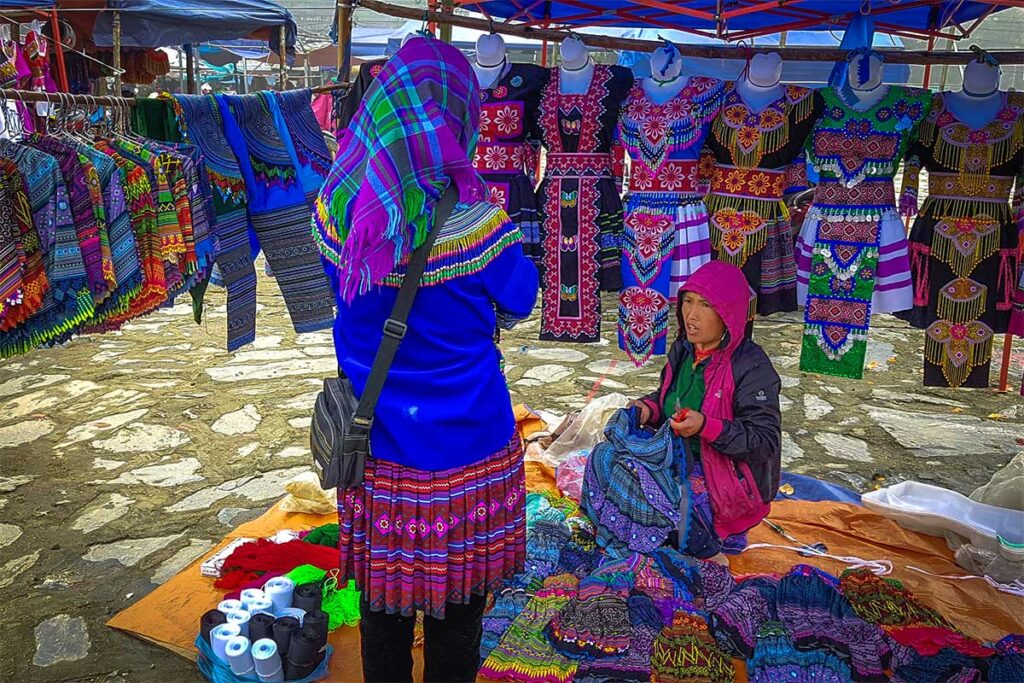
You’ll see Hmong women dressed in bright, embroidered outfits — many of them handmade. Some come to sell traditional clothing, fabric rolls, or headscarves, often laid out neatly on tarps. Even if you’re not buying, it’s worth slowing down to take in the craftsmanship.
2. Livestock area
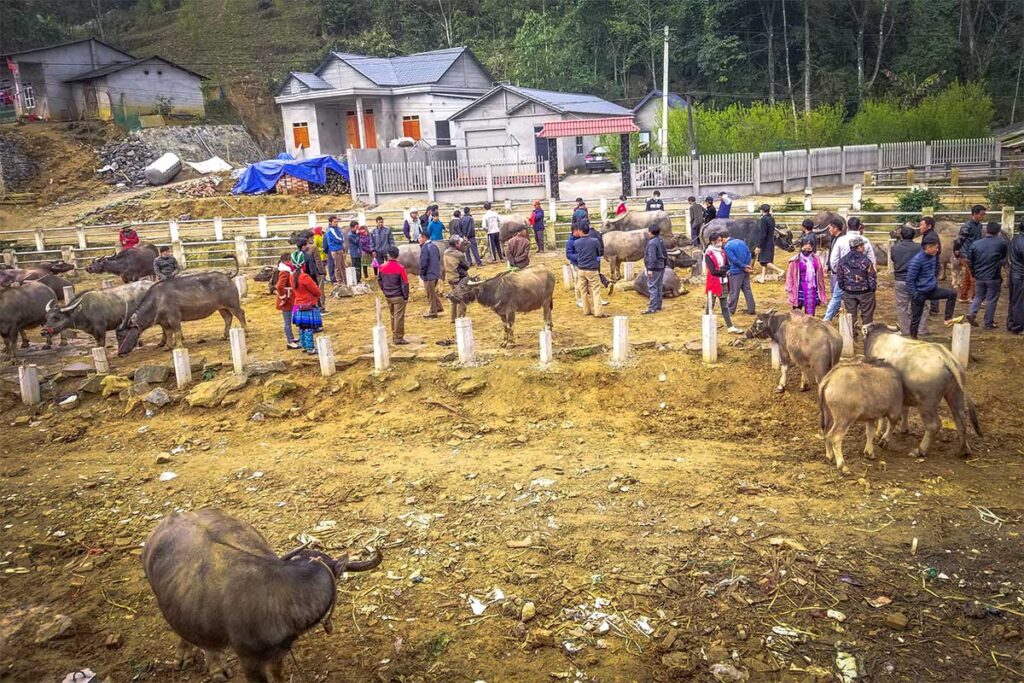
Just beyond the main stalls, there’s usually a corner where animals are kept — buffalos, pigs, chickens, and even dogs. Some are tied to posts, others roam loosely nearby. Locals inspect the animals closely, negotiating prices and checking for health — it’s a key part of the market economy.
3. Food & Produce
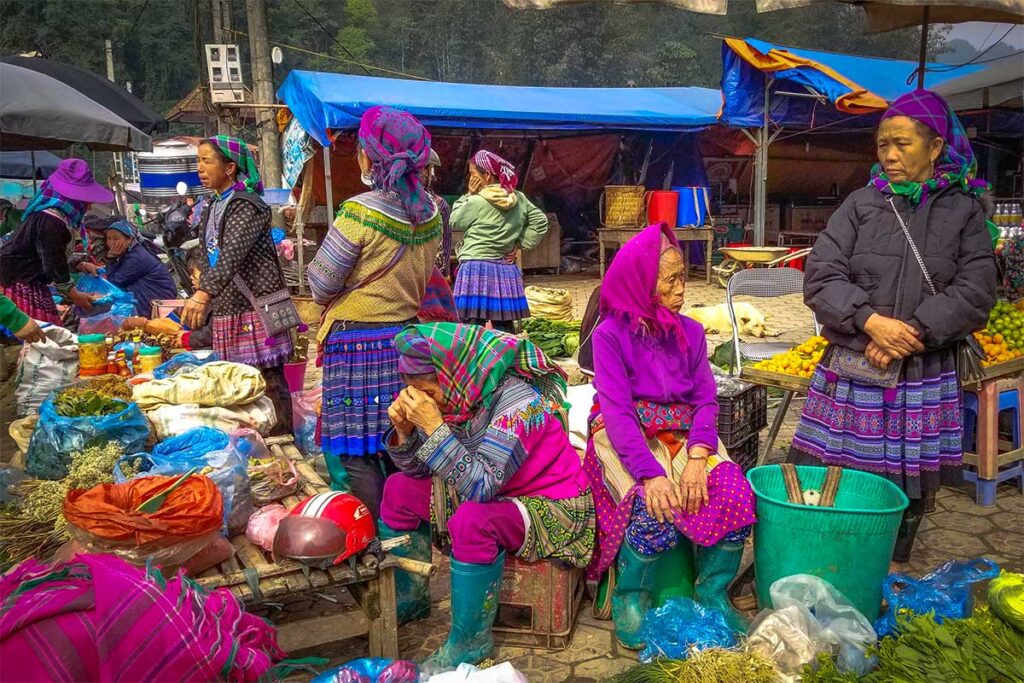
Seasonal vegetables, fruits, forest herbs, and medicinal roots are sold in small bunches. These are often grown in nearby fields or foraged in the mountains. Some items, like cardamom or bamboo shoots, might be unfamiliar but are staples in local kitchens.
4. Hot dishes & Market snacks
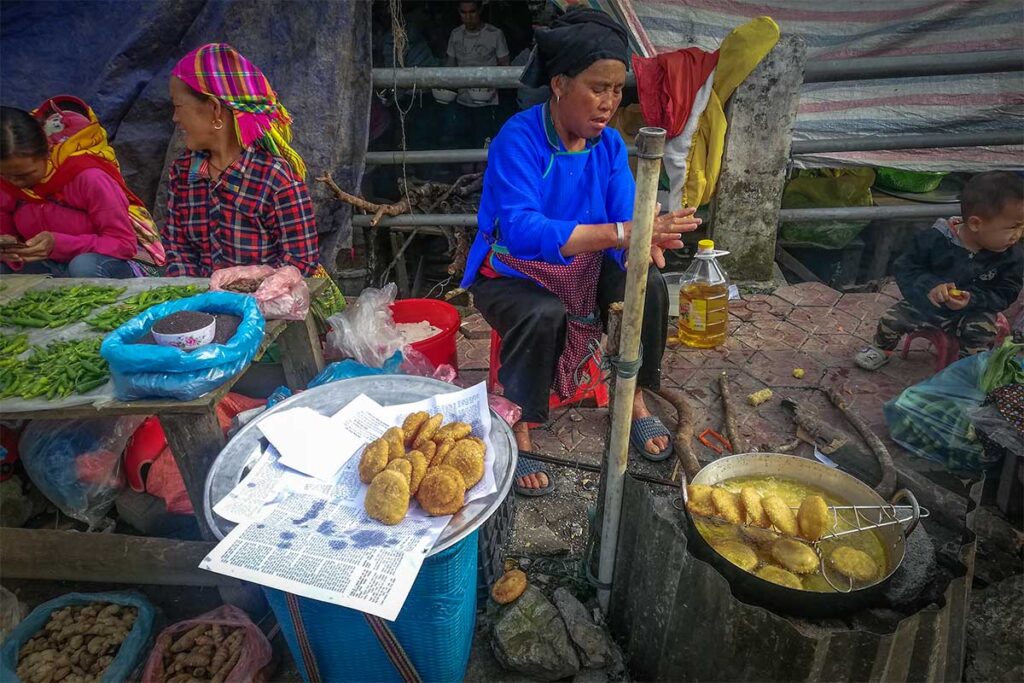
There’s always a food corner where you can grab a hot meal. Typical dishes include thang co (a traditional stew, usually made with horse or pig), men men (steamed ground corn), and sour pho.
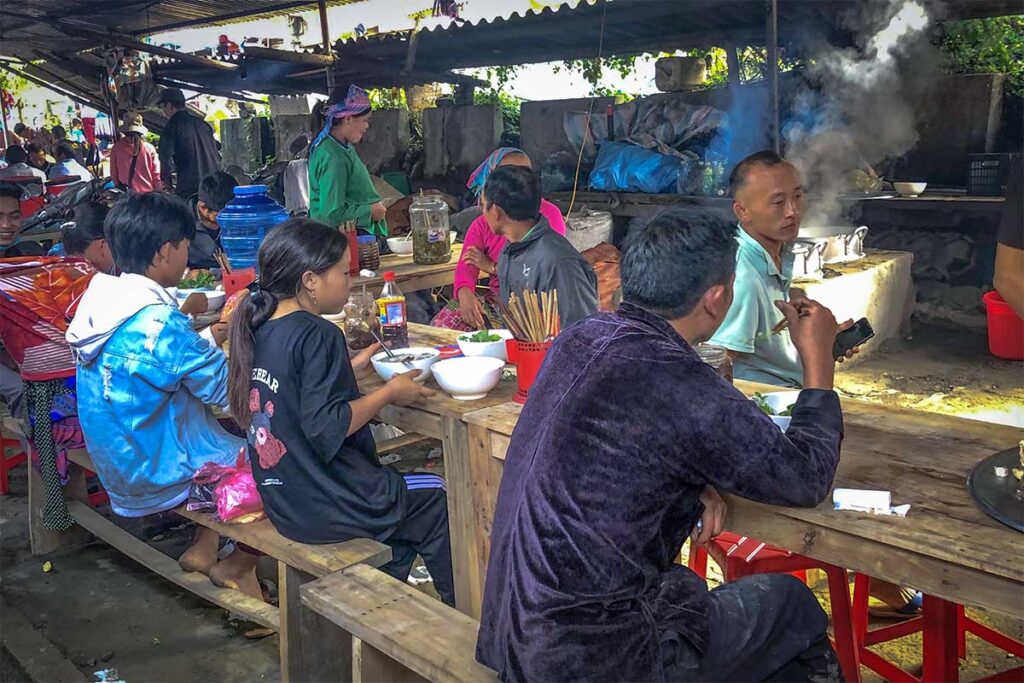
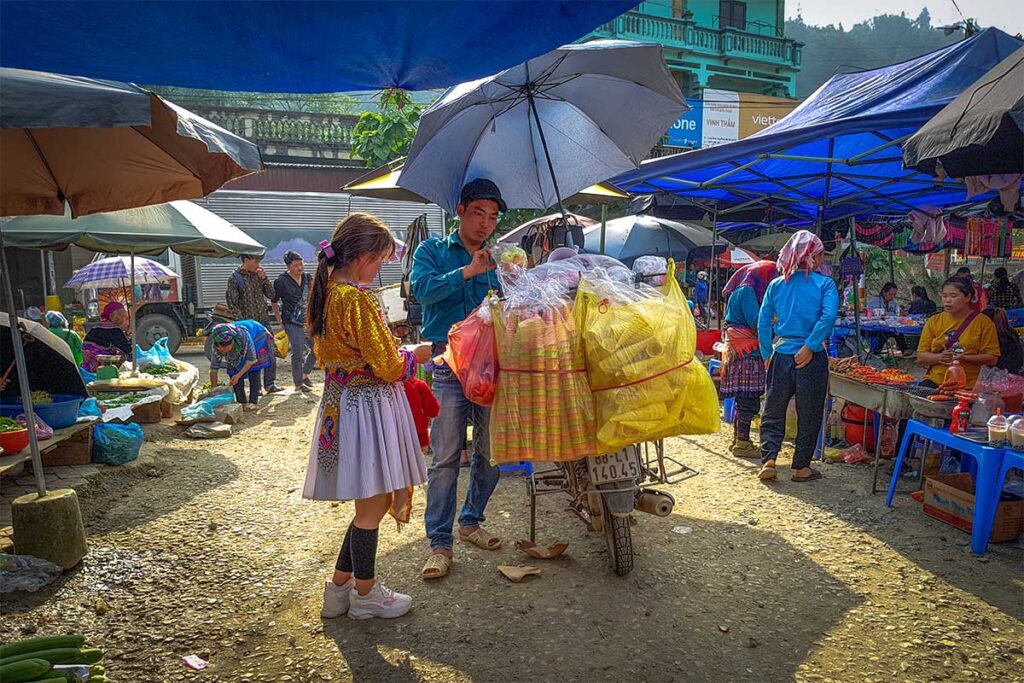
Most vendors cook over open fires, and locals often eat sitting on low plastic stools with a bowl in one hand and a cup of corn wine in the other.
5. Tools & Household items
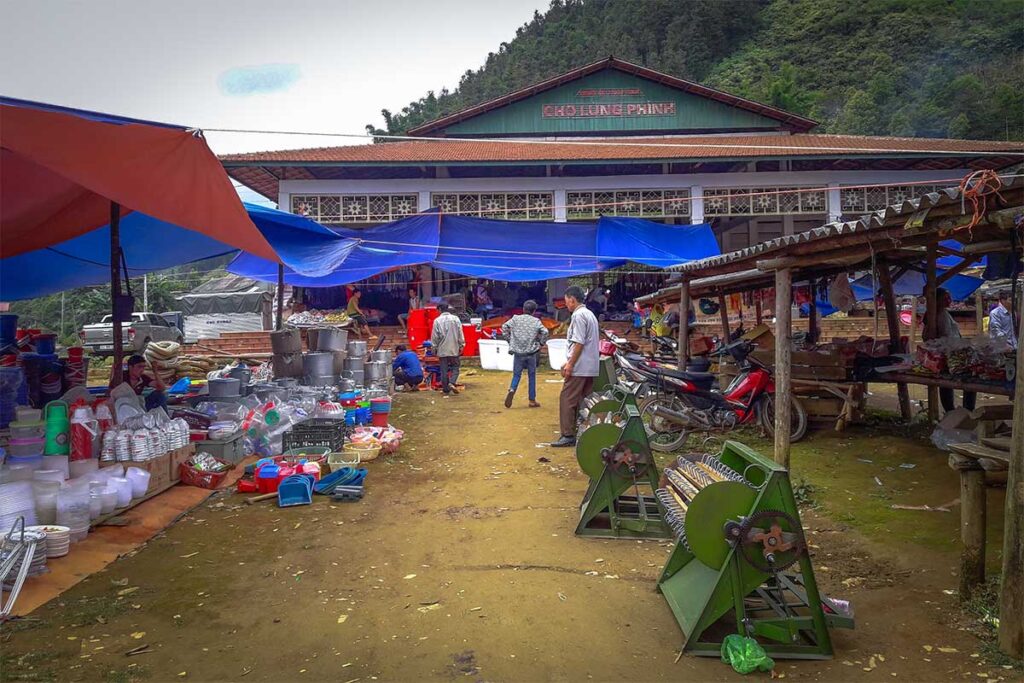
Many stalls sell practical items — machetes, shovels, kitchen pans, and other everyday tools used in farming or at home. These are not souvenir-style handicrafts but real equipment made for tough daily use.
6. Cultural atmosphere
Beyond trade, Lung Phin Market is a social hub. People meet friends from other villages, catch up on gossip, flirt, and share drinks. Some arrive the night before to eat, talk, and even play music. It’s one of the few regular chances for highland communities to gather — and it shows in the energy and warmth of the place.
Tips for visiting Lung Phin Market
Visiting Lung Phin Market can be one of the most authentic travel experiences in northern Vietnam — if you’re prepared. Here are a few practical tips to help you make the most of it:
- Stay in Bac Ha the night before – The market gets going before sunrise. Staying nearby saves you from a long, dark drive in the early morning.
- Check the date carefully – It runs on the Vietnamese lunar calendar, not the Western one. A guide or local contact can confirm the exact market day.
- Be respectful with photos – Always ask before taking close-up portraits. People here are welcoming, but not everyone is comfortable being photographed.
- Prepare for raw sights – Expect to see livestock, fresh butchering, steaming bowls of thang co, and open-fire cooking. This is a real working market.
- Dress modestly – Many ethnic groups in the area are conservative. Avoid shorts or revealing clothes.
- Don’t expect tourist services – There’s no signage, English speakers, or organized facilities. If you want to understand more than just the visuals, bring a local guide.
- Combine with nearby activities – The market alone doesn’t justify the long trip. Pair it with a visit to Bac Ha town, some light trekking, or a stop in Ban Pho village to round out the day.
Other markets around Sapa
Lung Phin Market is just one of several ethnic markets in the region — and each one has its own vibe, schedule, and setting. Most are held weekly, but not all fall on weekends, which gives you more flexibility when planning your itinerary. You don’t have to be in Sapa on a Sunday to visit a great market.
Here are some other markets to consider:
- Bac Ha Market (Sunday) – The biggest and best-known. Busy, colorful, and easy to visit, but also the most touristy.
- Can Cau Market (Saturday) – Set along a mountain slope north of Bac Ha, this market is famous for its livestock section and striking scenery.
- Coc Ly Market (Tuesday) – Smaller and more laid-back. Located near the Chay River, it can be combined with a short boat ride.
- Muong Hum Market (Sunday) – Deep in the hills southwest of Sapa, this market draws mostly local ethnic groups and has a raw, authentic atmosphere.
- Sin Cheng Market (Wednesday) – Remote and rarely visited by tourists. It’s known for its strong Hmong presence and lack of outside influence.
- Muong Khuong Market (Sunday) – A large market closer to the China border, with a broad mix of ethnic groups and goods.
If you’re visiting northern Vietnam for more than a few days, it’s worth picking one or two of these markets to include — especially if you want something more traditional and less crowded than the usual stops.
